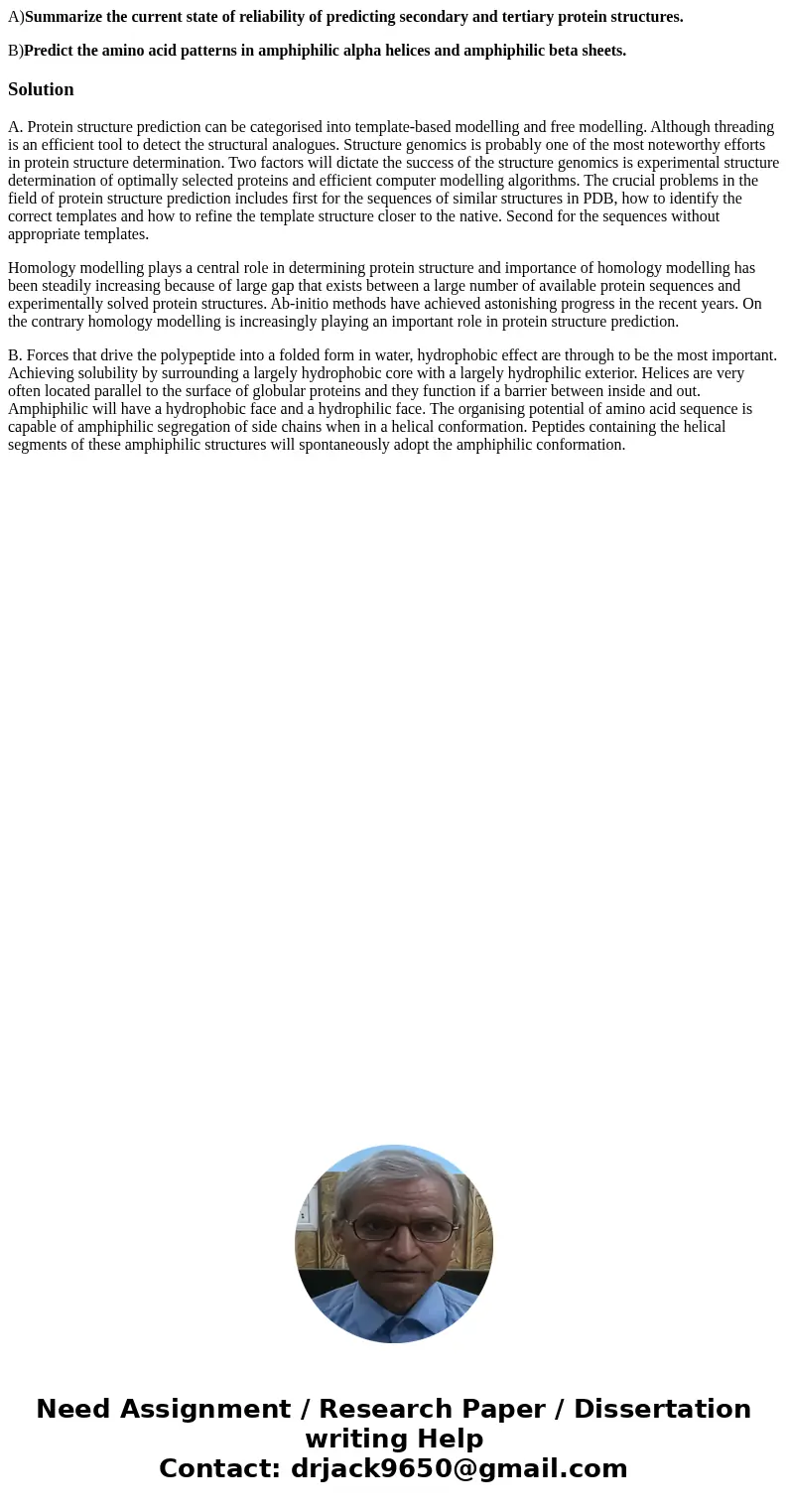ASummarize the current state of reliability of predicting se
A)Summarize the current state of reliability of predicting secondary and tertiary protein structures.
B)Predict the amino acid patterns in amphiphilic alpha helices and amphiphilic beta sheets.
Solution
A. Protein structure prediction can be categorised into template-based modelling and free modelling. Although threading is an efficient tool to detect the structural analogues. Structure genomics is probably one of the most noteworthy efforts in protein structure determination. Two factors will dictate the success of the structure genomics is experimental structure determination of optimally selected proteins and efficient computer modelling algorithms. The crucial problems in the field of protein structure prediction includes first for the sequences of similar structures in PDB, how to identify the correct templates and how to refine the template structure closer to the native. Second for the sequences without appropriate templates.
Homology modelling plays a central role in determining protein structure and importance of homology modelling has been steadily increasing because of large gap that exists between a large number of available protein sequences and experimentally solved protein structures. Ab-initio methods have achieved astonishing progress in the recent years. On the contrary homology modelling is increasingly playing an important role in protein structure prediction.
B. Forces that drive the polypeptide into a folded form in water, hydrophobic effect are through to be the most important. Achieving solubility by surrounding a largely hydrophobic core with a largely hydrophilic exterior. Helices are very often located parallel to the surface of globular proteins and they function if a barrier between inside and out. Amphiphilic will have a hydrophobic face and a hydrophilic face. The organising potential of amino acid sequence is capable of amphiphilic segregation of side chains when in a helical conformation. Peptides containing the helical segments of these amphiphilic structures will spontaneously adopt the amphiphilic conformation.

 Homework Sourse
Homework Sourse